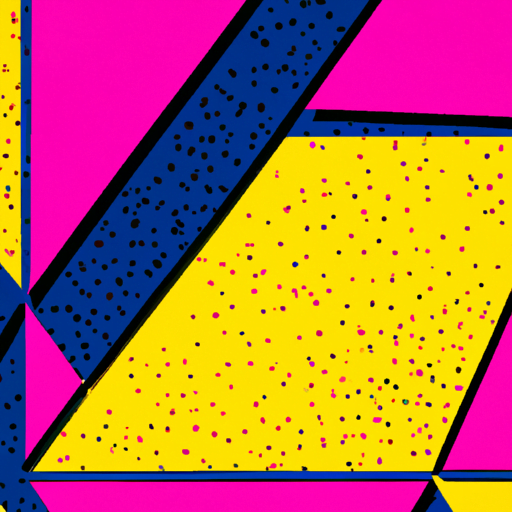
-
Table of Contents
- Using Patterns and Textures to Add Depth to Designs
- The Importance of Patterns and Textures in Design
- Using Patterns and Textures Effectively
- 1. Complement the Content
- 2. Create Visual Hierarchy
- 3. Balance and Contrast
- 4. Consider the Medium
- Case Studies: Successful Use of Patterns and Textures
- 1. Airbnb
- 2. Starbucks
- Conclusion
Using Patterns and Textures to Add Depth to Designs

Design is not just about aesthetics; it is about creating an experience that engages and captivates the audience. One way to achieve this is by incorporating patterns and textures into your designs. Patterns and textures can add depth, visual interest, and a sense of realism to your designs. In this article, we will explore the importance of patterns and textures in design and provide valuable insights on how to effectively use them to enhance your designs.
The Importance of Patterns and Textures in Design
Patterns and textures play a crucial role in design as they can evoke emotions, create visual interest, and add depth to flat surfaces. They can transform a plain and monotonous design into a visually captivating masterpiece. Here are some reasons why patterns and textures are important in design:
- Visual Interest: Patterns and textures can instantly grab the viewer’s attention and make a design more visually appealing. They break the monotony of flat surfaces and add a dynamic element to the design.
- Emotional Impact: Different patterns and textures can evoke different emotions. For example, a soft and delicate pattern can create a sense of calmness and tranquility, while a bold and vibrant texture can evoke excitement and energy.
- Depth and Realism: By adding patterns and textures, you can create an illusion of depth and make your design look more realistic. This can be particularly useful in digital designs, where adding textures can make the design feel more tactile and tangible.
- Brand Identity: Patterns and textures can also be used to reinforce a brand’s identity. For example, a luxury brand may use intricate and elegant patterns to convey a sense of sophistication and exclusivity.
Using Patterns and Textures Effectively
Now that we understand the importance of patterns and textures in design, let’s explore some effective ways to use them:
1. Complement the Content
When using patterns and textures, it is important to ensure that they complement the content and do not overpower it. The patterns and textures should enhance the message you are trying to convey rather than distract from it. For example, if you are designing a website for a nature-themed brand, using subtle leaf patterns in the background can reinforce the brand’s identity without overwhelming the content.
2. Create Visual Hierarchy
Patterns and textures can be used to create visual hierarchy in your designs. By using different patterns and textures in varying sizes and intensities, you can guide the viewer’s eye and emphasize important elements. For example, you can use a bold and intricate pattern for the main focal point of your design, while using a simpler and more subtle pattern for secondary elements.
3. Balance and Contrast
When incorporating patterns and textures, it is important to achieve a balance and contrast within your design. Too many patterns or textures can create visual clutter and make the design overwhelming. On the other hand, using too few patterns or textures can make the design appear flat and uninteresting. Striking the right balance and contrast is key to creating a visually pleasing design.
4. Consider the Medium
When using patterns and textures, it is important to consider the medium in which your design will be displayed. Different mediums have different limitations and requirements. For example, if you are designing for print, you need to consider the resolution and color limitations of the printing process. On the other hand, if you are designing for digital platforms, you need to consider the file size and loading time. Adapting your patterns and textures to the medium will ensure that your design looks its best.
Case Studies: Successful Use of Patterns and Textures
Let’s take a look at some real-world examples of successful use of patterns and textures in design:
1. Airbnb
Airbnb, the popular online marketplace for vacation rentals, effectively uses patterns and textures in their branding and website design. They incorporate a subtle wave pattern in their logo, which represents the idea of travel and exploration. Additionally, their website features background textures that resemble different types of accommodations, such as wooden textures for cabins and brick textures for urban apartments. These patterns and textures add depth and visual interest to their designs, making the user experience more engaging.
2. Starbucks
Starbucks, the global coffeehouse chain, uses patterns and textures to create a cozy and inviting atmosphere in their stores. Their iconic mermaid logo is surrounded by a circular pattern resembling coffee stains, which adds a touch of warmth and familiarity. Inside their stores, they use textured materials like wood and brick to create a rustic and comfortable ambiance. These patterns and textures contribute to the overall brand experience and make customers feel at home.
Conclusion
Patterns and textures are powerful tools that can elevate your designs and create a memorable experience for your audience. By understanding the importance of patterns and textures in design and using them effectively, you can add depth, visual interest, and a sense of realism to your designs. Remember to complement the content, create visual hierarchy, achieve balance and contrast, and consider the medium in which your design will be displayed. By incorporating patterns and textures thoughtfully, you can create designs that captivate and engage your audience.
